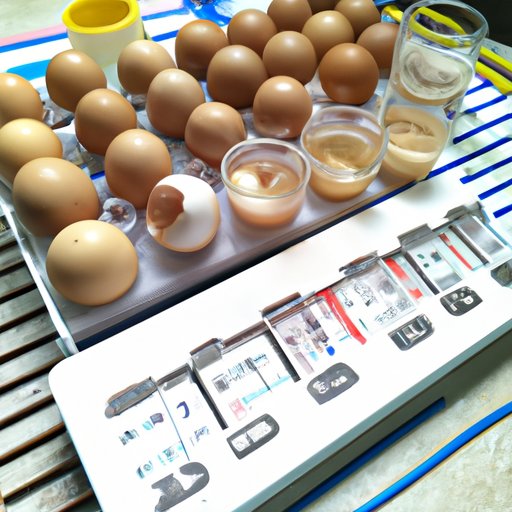Introduction
Knowing whether or not eggs are still good to eat is an important part of food safety and health. Eating expired eggs can cause food poisoning, and even lead to serious illnesses such as salmonella. But with a few simple tests, you can easily determine if your eggs are still good to eat.
First, let’s define what “good to eat” eggs are. Generally, these are eggs that have been stored properly, and have not passed their expiration date. They should also not have any visible cracks, discoloration, or off-putting odors.
In this article, we will explore different ways to test if your eggs are still good to eat. We will cover checking the expiration date, looking for visible cracks, the cold water test, the tap test, the light source test, the smell test, and the crack open test.
Checking the Expiration Date
The first thing you should do when trying to determine if your eggs are still good is to check the expiration date. Most egg cartons have a “best by” or “sell by” date printed on them, which will give you an indication of how long the eggs will remain fresh.
It’s important to note that the date listed on the carton is not necessarily the date the eggs will expire. In most cases, the eggs will remain fresher for up to two weeks after the date listed. However, it’s best to use them as soon as possible for optimal safety.
Visible Cracks in the Eggs
Another way to tell if your eggs are still good is to look for visible cracks in the shell. Eggs that have cracked shells are more likely to be spoiled and should be discarded immediately.
When inspecting the eggs, look for any obvious signs of damage such as chips, dents, or discoloration. If you find any of these, it’s best to throw the eggs away to avoid potential contamination.
Cold Water Test
The cold water test is a simple way to tell if your eggs are still good. To do this test, fill a bowl with cold water and gently place the egg in the water. If the egg sinks to the bottom and lies flat on its side, it is still fresh. If the egg floats to the top or stands upright, it is no longer good to eat.
This is because as eggs age, the air pocket inside the eggshell expands, causing the egg to float. The older the egg, the more air it will contain and the higher it will float.
Tap Test
The tap test is another way to test the freshness of your eggs. To do this test, simply take the egg and lightly tap it on a hard surface. If the eggshell feels solid, then the egg is still fresh. If the eggshell feels soft or spongy, then the egg is no longer good to eat.
This is because as eggs age, the air pocket inside the eggshell expands, causing the eggshell to become soft and spongy.
Light Source Test
The light source test is another quick and easy way to tell if your eggs are still good. To do this test, simply hold the egg up to a light source and look through the shell. If you can see any dark spots or discoloration, then the egg is no longer good to eat.
This is because as eggs age, they lose moisture and the yolk begins to break down, leading to dark spots and discoloration.
Smell Test
The smell test is one of the most reliable ways to tell if your eggs are still good. Simply take a whiff of the egg and if it smells off or sour, then it is no longer good to eat.
This is because as eggs age, the proteins begin to break down and release a sour smell.
Crack Open Test
The crack open test is the most reliable way to tell if your eggs are still good. To do this test, simply crack the egg open and inspect the egg white and yolk. If the egg white is clear and the yolk is firm, then the egg is still fresh. If the egg white is cloudy or the yolk is runny, then the egg is no longer good to eat.
This is because as eggs age, the proteins in the egg whites and yolks begin to break down, leading to a cloudy egg white and a runny yolk.
Conclusion
Testing if eggs are still good to eat is an important part of food safety. In this article, we explored different ways to test if your eggs are still good, from checking the expiration date to the crack open test. By following these steps, you can make sure your eggs are safe to consume.
It’s important to remember that eggs can spoil quickly, so it’s always best to use them as soon as possible. And always discard any eggs that show signs of spoilage, such as visible cracks, discoloration, or off-putting odors.
(Note: Is this article not meeting your expectations? Do you have knowledge or insights to share? Unlock new opportunities and expand your reach by joining our authors team. Click Registration to join us and share your expertise with our readers.)
